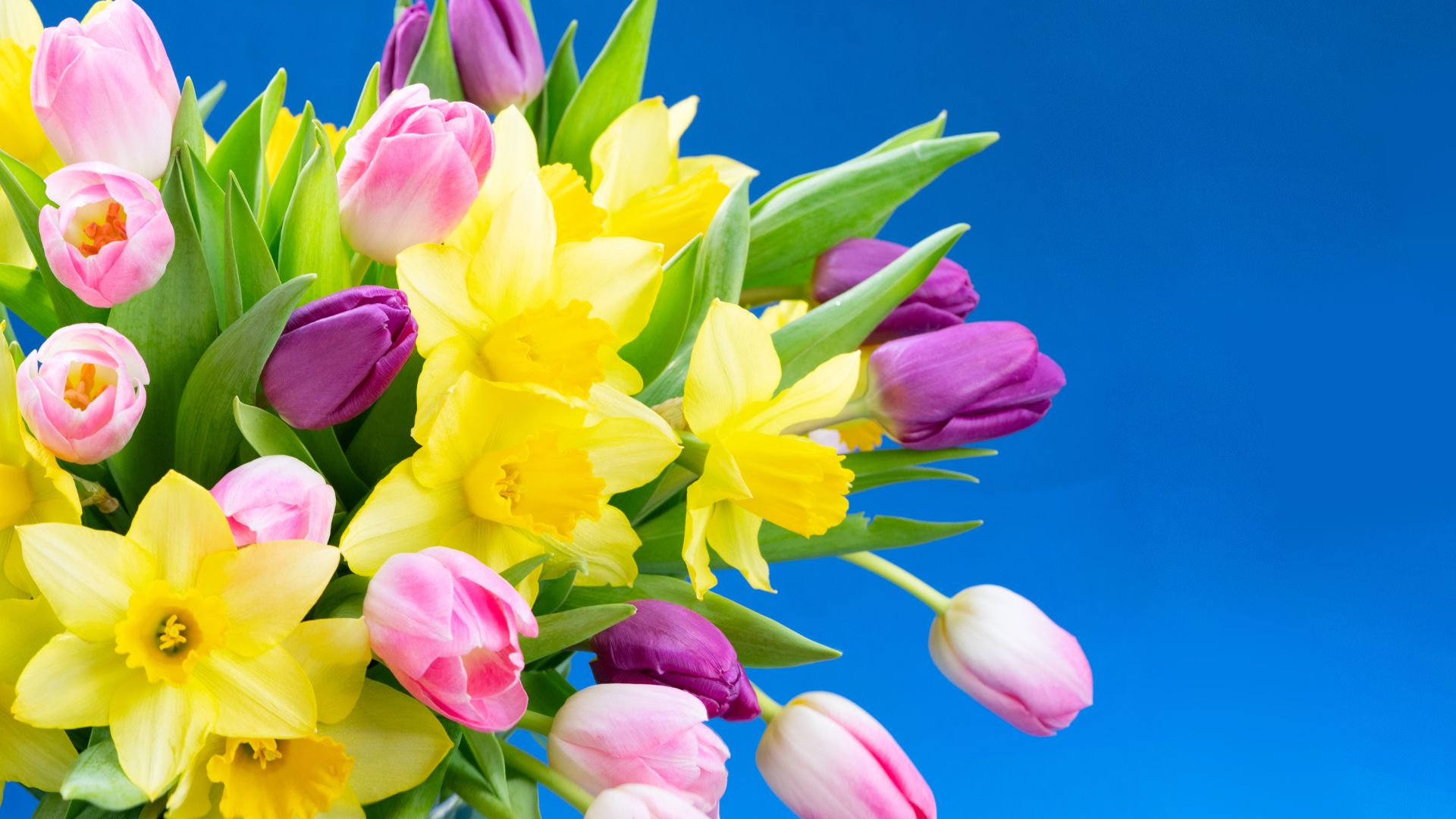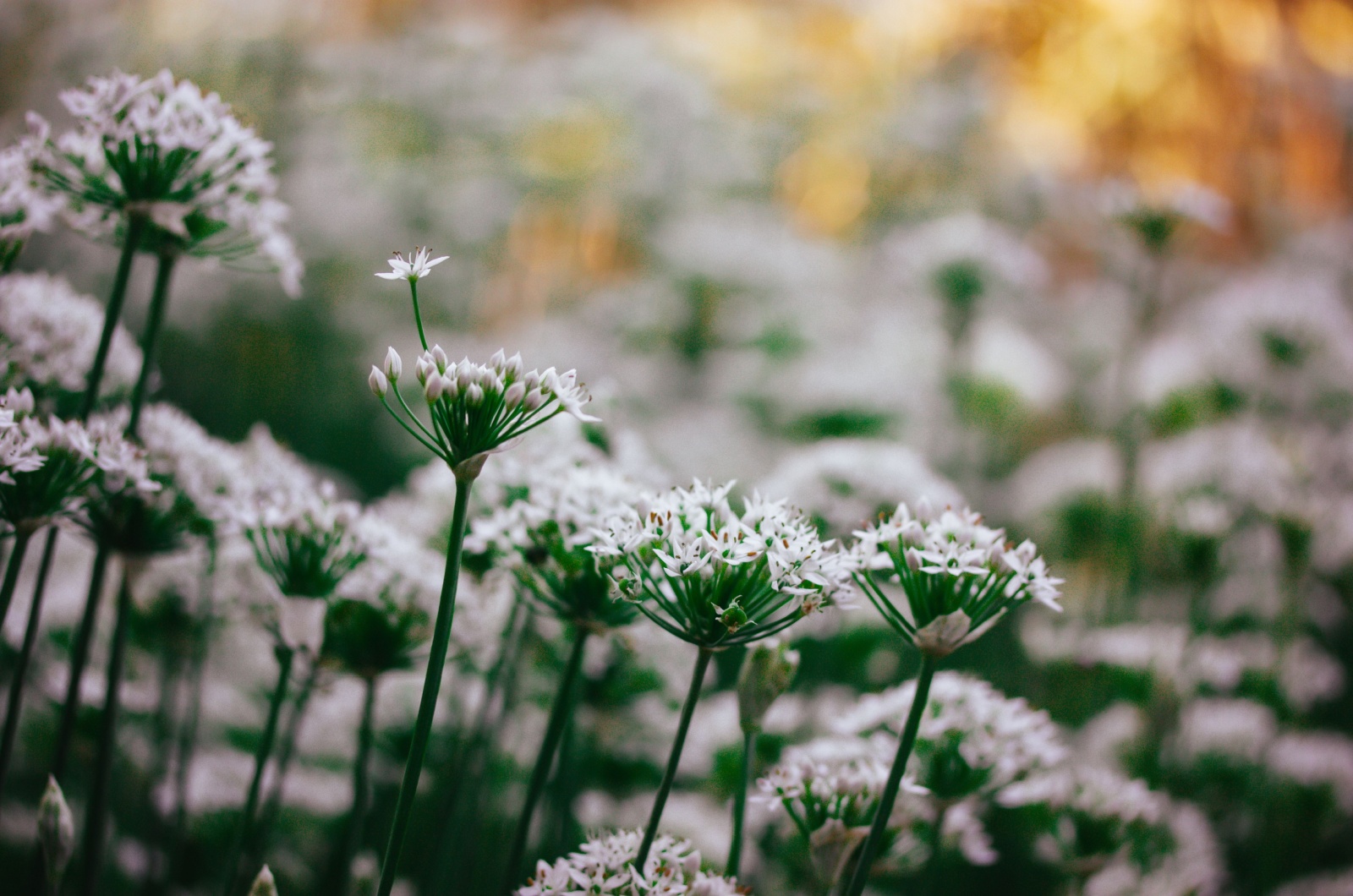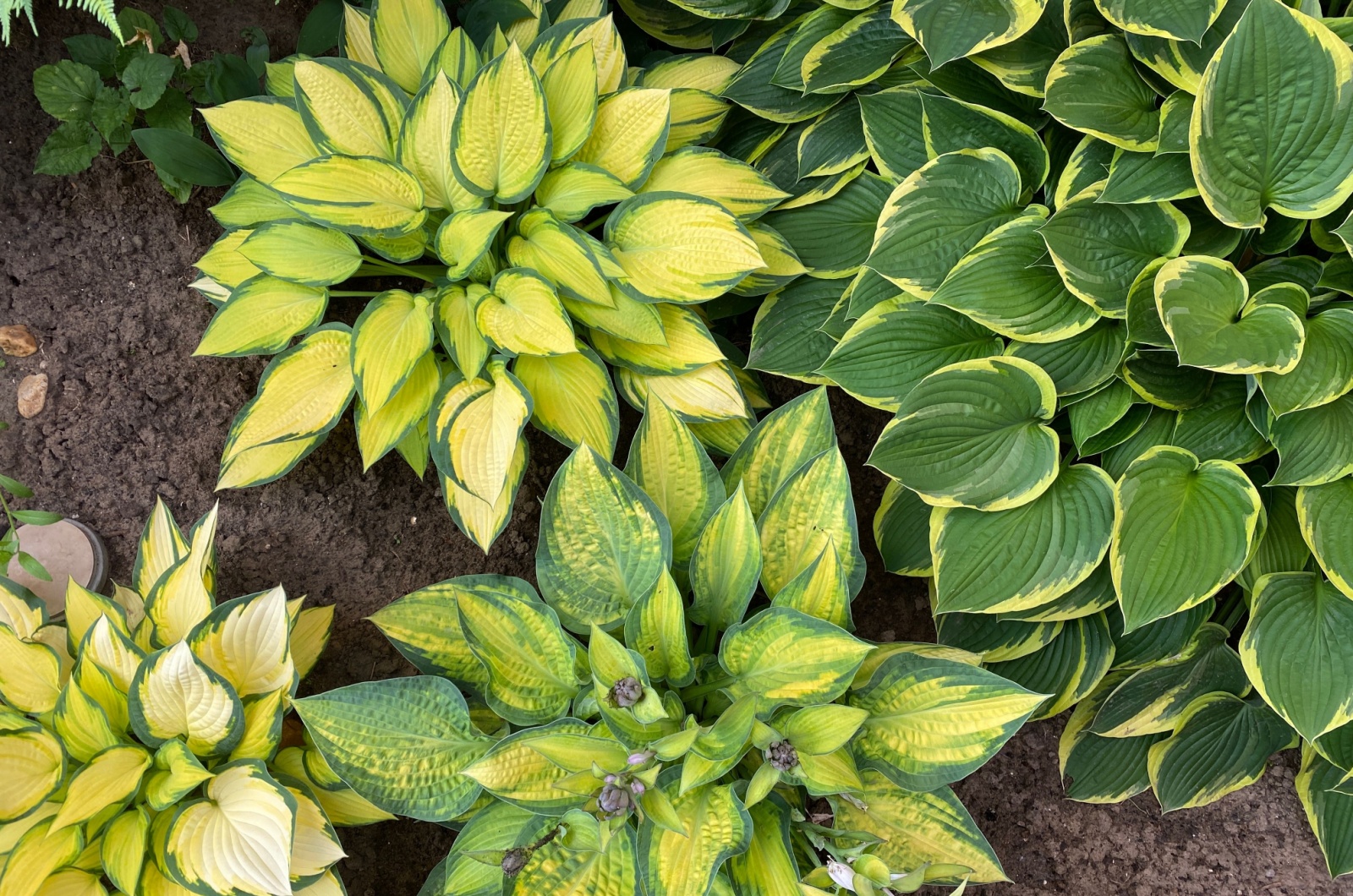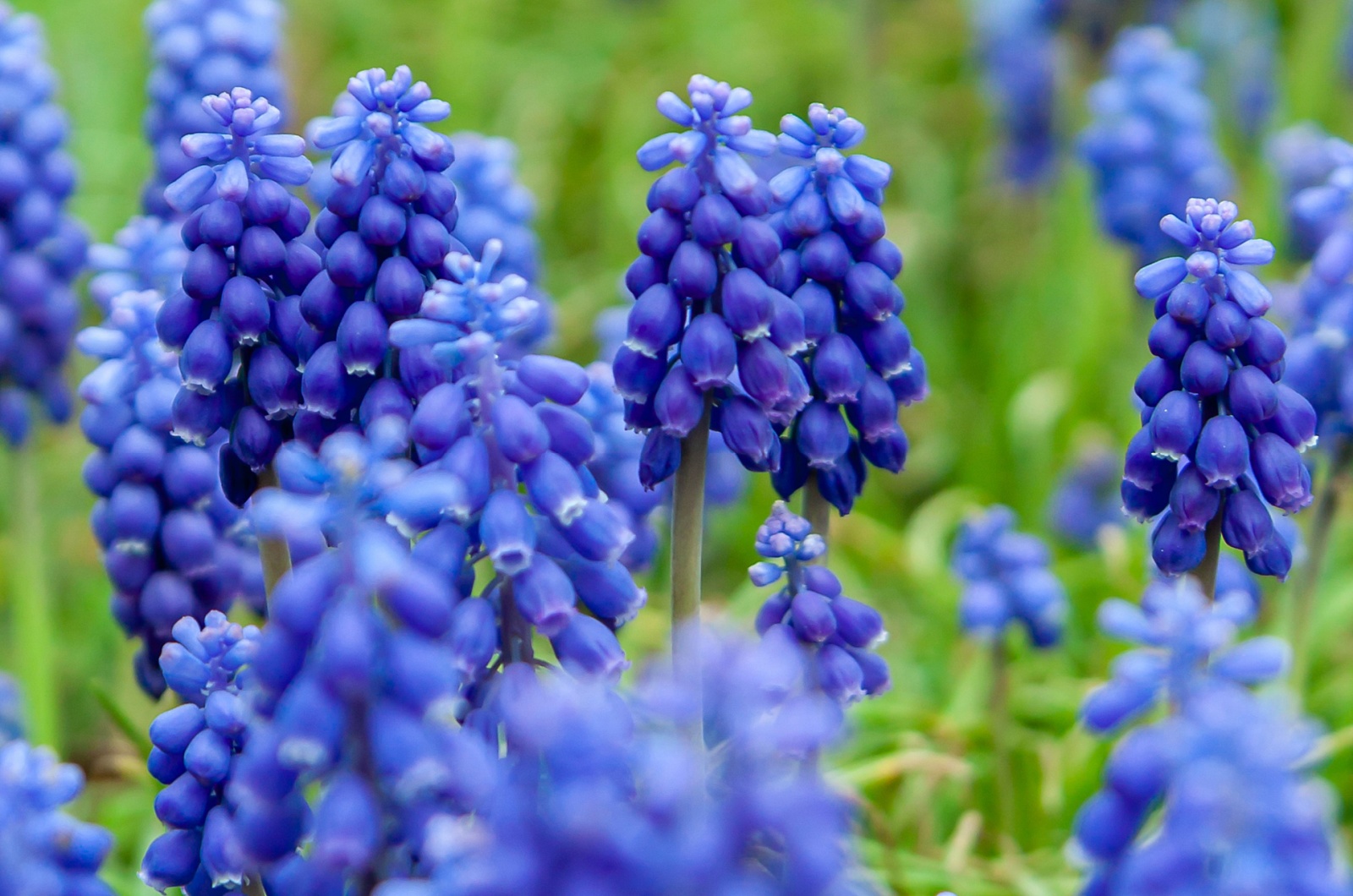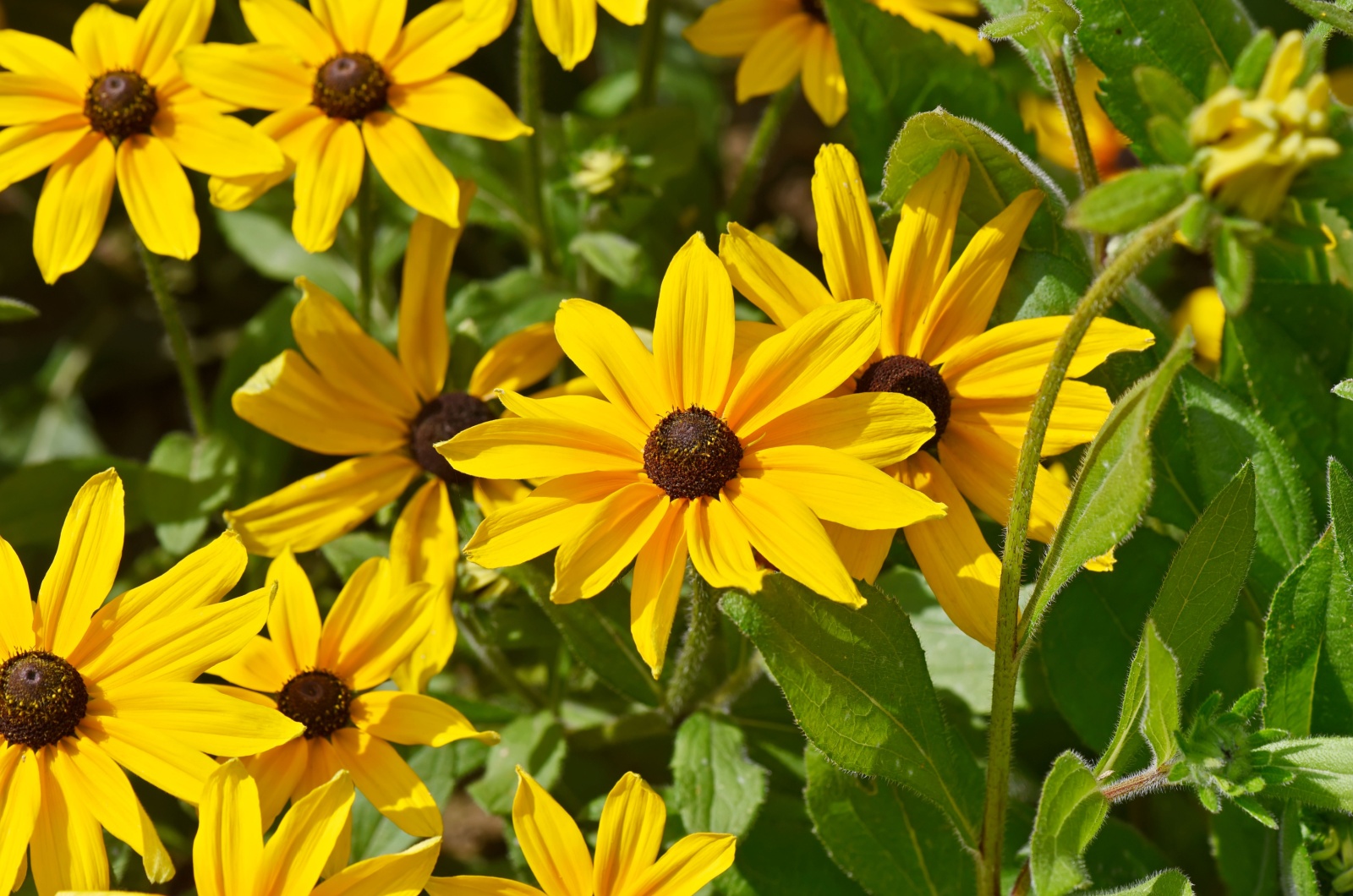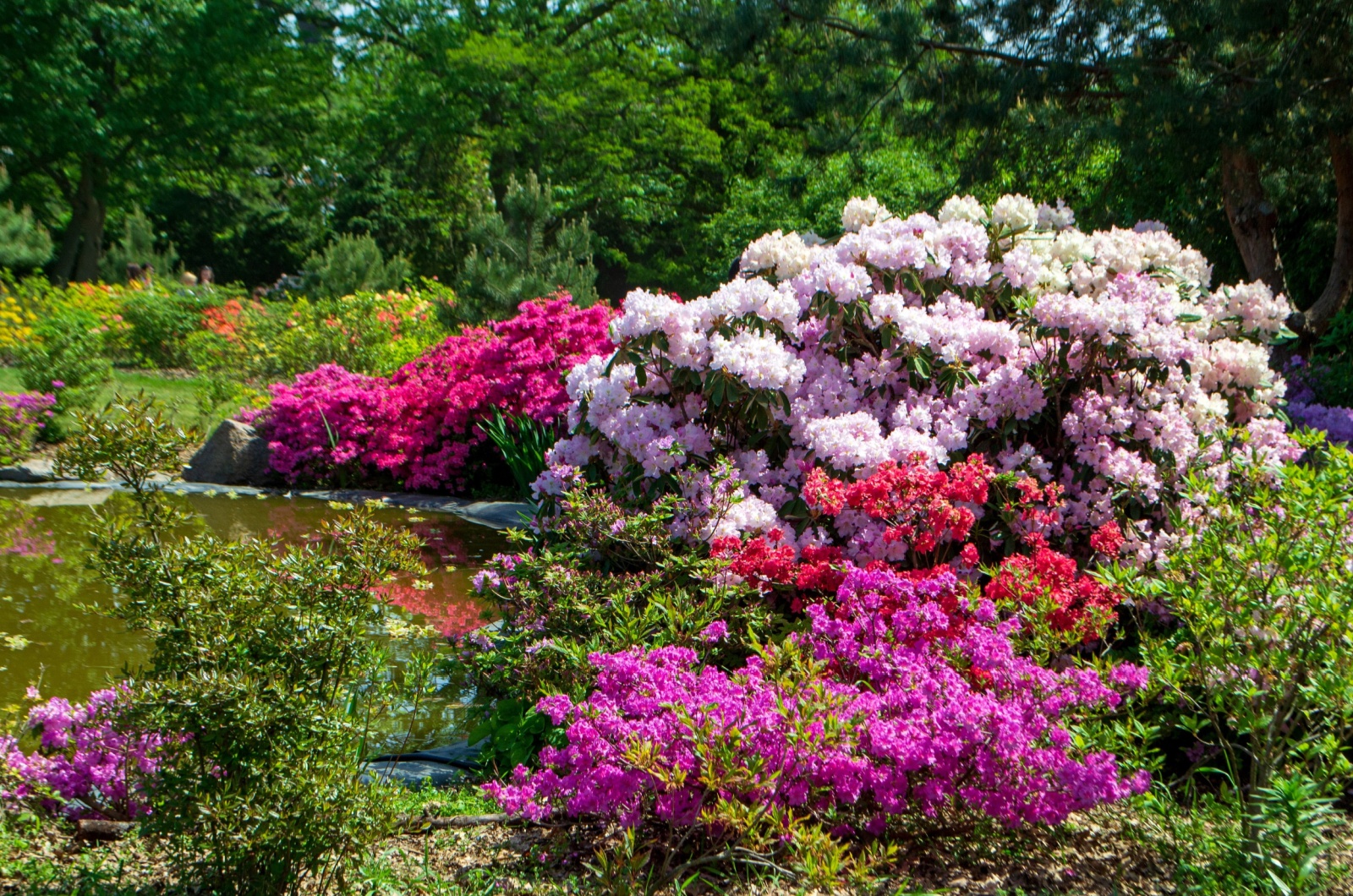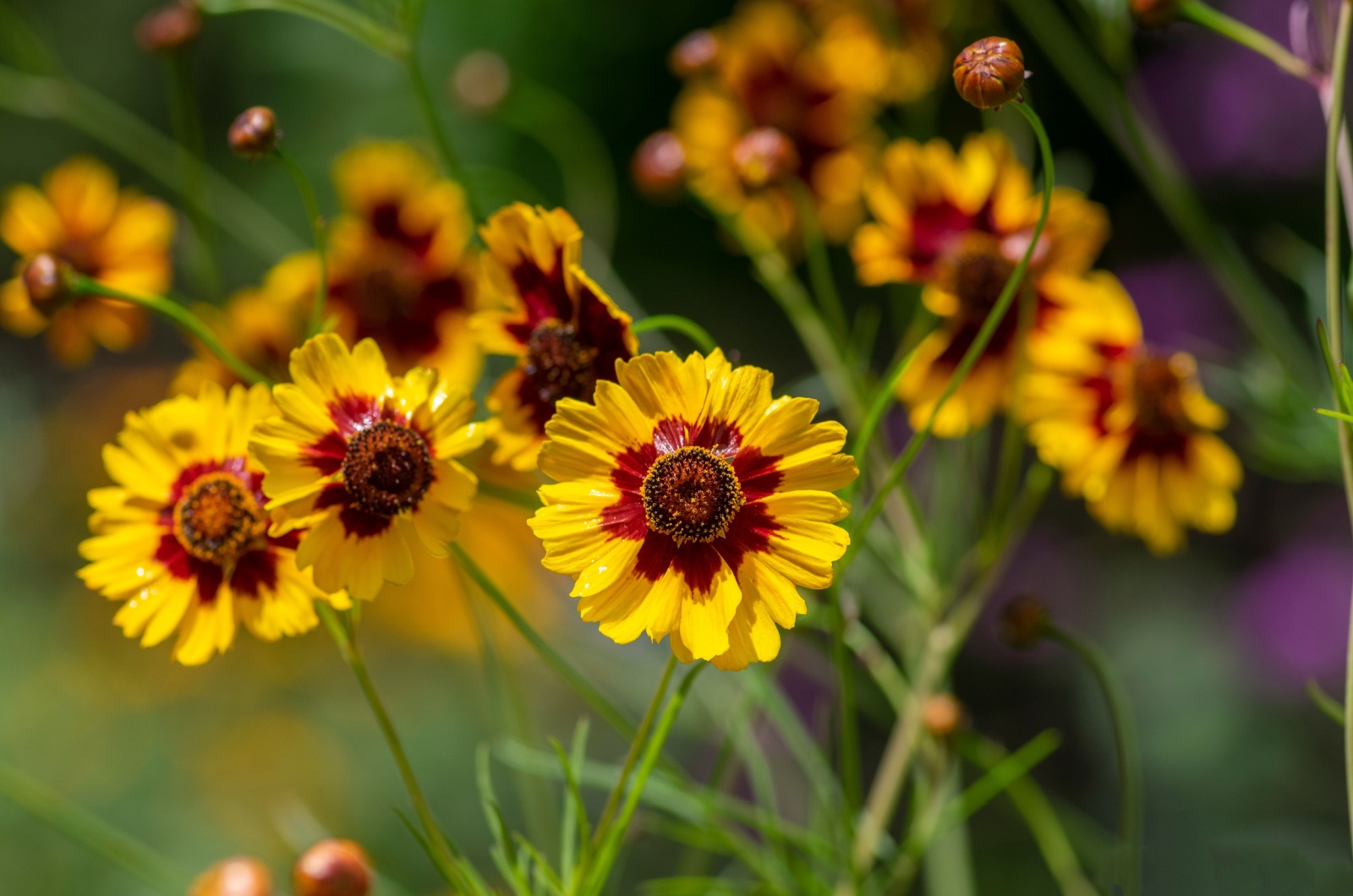Spring has finally sprung and, if you’re anything like me, you’ve probably spent a good chunk of time admiring your daffodils. Those cheerful yellow blooms are like the sunshine of the garden, right?
But, let’s be honest, even the happiest daffodils could use a little company to really make the garden pop, which is why I decided to go find them the perfect plant pals!
I tried everything from tulips to hyacinths, and let’s just say there were a few hilarious mishaps along the way (like the time I accidentally planted marigolds in the shade and they gave me the silent treatment).
Now I’ve got the ideal list of companions that will not only keep your daffodils company but also make everyone in the neighborhood jealous of your flower garden!
1. Consider Growing Alliums
I used to think my garden was colorful enough with just daffodils, but, boy, was I wrong!
In fact, you can combine them with multiple flowers. This includes beloved alliums, known for their tall stalks and adorable pom-pom flowers.
They bloom in spring, making them the best companions for your daffodils. You can plant their bulbs in the fall right alongside your flowers. The smallest alliums are like little garden gnomes, growing between 3 and 6 inches tall, while the tallest varieties reach up to 18 inches.
They love the sun, so they get along great with daffodils, and at the same time add both height and texture to your garden.
Also read: Here’s Why Growing Alliums Near Each Other Isn’t A Good Idea
2. Pasque Flowers Also Look Great Next To Daffodils
The pasque flower (Pulsatilla vulgaris) is one of those garden gems that always catches my eye (seriously, I always stop to admire their beauty). With its delicate petals and distinctive colors, it’s a stunning addition to any garden.
They bloom between April and May, overlapping with daffodils just enough to create a seamless transition of color. I remember planting them one year and being absolutely amazed with how wonderfully they complemented my daffodils. Now, they are a must-have in my flower garden!
Growing between 9 and 12 inches tall, pasque flowers pair nicely with daffodils height-wise. They both thrive in well-draining soil and partial to full sun, making it easy to find a place where they’ll both be happy.
If you want an all-yellow garden, go for P. sylvestris. Otherwise, these flowers come in beautiful shades of violet, blue, and white. Together, these flowers will put on the best spring fashion show in your garden!
3. Virginia Bluebells And Daffodils Pair Up Nicely
If you want to add some native plants to your garden, Virginia bluebells (Mertensia virginica) are the way to go.
These precious flowers from eastern North America bloom in early spring, just in time to accompany those pretty daffodils. They love partial to full shade and rich soil (best for shaded spots in the garden where other flowers might struggle).
At first, I wasn’t sure what to expect when I planted Virginia bluebells among my daffodils. However, they soon filled my garden with beauty and cheer (just what I needed!).
I like how their blue-violet flowers create a beautiful contrast to bright yellow daffodils. They also make the garden look fuller thanks to their abundant foliage that fills out the empty spaces between daffodils.
4. Hostas Shouldn’t Be Missed
I figure you can always rely on hostas. Need some more greenery? Simply plant hostas.
They produce large leaves that create an amazing background for the cheerful daffodil blooms in spring.
As the daffodil flowers fade and their leaves start to wilt, hostas step in to conceal them and keep your garden looking fresh and tidy all the time!
When summer rolls around, these plants show off their own colorful blooms in shades of pink, blue, lavender, or white (you get even more flowers for your flower garden!)
Having issues with your hostas? This might be helpful: Why Hostas Turn Yellow And How To Fix It
5. You Could Grow Crocuses As Well
You know those cute little flowers that look like mini tulips? Yeah, those are crocuses!
They might be tiny, but they pack a punch in the springtime.
Plant them in the fall, and by the time spring rolls around they’ll be thriving alongside your daffodils. And speaking of colors, crocuses come in blues, purples, oranges, and yellows, so you can combine whichever shade suits your garden best.
Just make sure your daffodils don’t hog all the sunlight because those crocuses need their moment in the sun too!
Related: How To Plant And Harvest Saffron Crocus Like A Pro
6. Tulips Are A Must-Have
Tulips and daffodils are the perfect buddies.
They’re both tough cookies when it comes to cold weather, so there’s no need to worry about a late frost ruining your flower garden. Plus, tulips come in many colors, so you can pick and choose whatever suits your style.
Want a sunshiny garden? Stick with yellows.
Feeling adventurous? Mix in some vibrant oranges and reds.
Want more elegance? Add purples, pinks, and whites.
The combinations are endless, and you can really let your creativity run wild!
Take some pics of your flowers and post them with these quotes: 70 Tulip Quotes That Capture The Essence of Tulips
7. Don’t Skip On Muscari Flowers
Have you heard about Muscari armeniacum, otherwise known as grape hyacinths? If not, then you are in for a treat!
These petite blooms resemble clusters of tiny grapes (hence the name) and create a delightful sight as they grow alongside daffodils.
What you can also do is plant them next to tulips – this ensures your garden stays colorful year after year!
Choose between blue, violet, or even pink muscari to complement the other flowers in your garden. Plant them in areas with sun to partial shade, just like their sunny companions.
8. You Can’t Go On Without Roses
Roses are a staple of almost every flower garden out there. I mean, they’re the classics – the infamous flower that everyones knows and loves.
When I decided to add roses to my garden, I felt like I was bringing in important guests to join my cheerful daffodils.
Roses bloom in late spring and keep going strong throughout the summer. They love full to partial sun, which makes them great partners for daffodils.
I discovered that planting these two together offers mutual benefits: the daffodils help keep pests and diseases away and fill in the gaps between the rose bushes, making them look fuller and more vibrant.
With so many varieties and colors of roses, you can create a custom color scheme that suits your style.
Although daffodils and roses don’t always bloom at the same time, they complement each other wonderfully.
Already got roses? This might be helpful: Master The Art Of Cultivating Climbing Roses And Watch Your Outdoor Space Blossom Beyond Limits
9. Peonies And Daffodils Are A Match Made In Heaven
Who can resist peonies and their charm? Not me.
With their ruffled flowers and abundant foliage, they are a favorite in many gardens, including mine. I simply plant them in full sun, water them from time to time, and they reward me with the best-looking blooms in spring and summer.
What’s also great about peonies is that their blooming season often overlaps with that of daffodils in spring, especially with early-blooming varieties (you’ll get to see a spectacular blooming show that looks beyond real!).
I usually plant them together to line my walkway, but you can put them in containers, on garden borders, or wherever you feel like they’d thrive!
Related: Here’s How To Force Peonies To Open And Bloom Quickly
10. Black-eyed Susan Must Be On The List
When I first added these daisy-like yellow blooms to my garden, I was amazed at how they picked up the show right when my daffodils started to fade away.
Since Black-eyed Susans bloom from June to August, they give your garden a little boost just when needed. There are plenty of varieties available (from classic yellow to orange and red) just waiting to brighten up your garden!
They thrive in full and partial sun, so planting them around your daffodils in the fall is super easy.
One tip from my own trial and error: go for the perennial varieties. This way, you won’t have to disturb your daffodil bulbs every year, and you’ll enjoy a consistent display of color.
11. Ligularia Is The Perfect Flower
Want to spice things up? Plant ligularia next to your daffodils.
With its striking bright yellow blooms arranged in long spikes, it’s guaranteed to make your garden look more cheerful and lively.
But it’s not just about the flowers with this plant, no sir. In fact, ligularia boasts large, eye-catching foliage that creates a wonderful green background, making your daffodils stand out even more in spring!
And just when you think the show is over, ligularia surprises you by bursting into bloom in the summer, keeping those yellowish shades alive.
Plant them together in the fall, and by spring you’ll have a dynamic duo that’s ready to turn heads.
12. Add Some Greenery With Heartleaf Brunnera
If you want to add in some greenery, Heartleaf brunnera (Brunnera macrophylla) has got your back!
This perennial ground cover is known for its heart-shaped leaves and charming purple-blue flowers that appear from April to May. As it stays low on the ground, Brunnera creates a beautiful base for daffodils to shine.
One thing I love about Brunnera is its easy-going nature. It’s the kind of plant that looks fantastic year-round (even after your daffodils have said their goodbyes for the season).
And talk about low maintenance – just give it some moist soil and a bit of shade, and it’ll thrive.
13. Rhododendrons Are For Long-Lasting Beauty
We can’t go on without the divas of the garden, aka rhododendrons, aka azaleas, aka partners in crime for daffodils!
These flowering shrubs make sure your garden stays vibrant and colorful all season long. And when they’re not busy showing off their blossoms, they offer a wonderful green backdrop that makes those daffodils pop even more.
Plus, they take away the spotlight from any wilting daffodils thanks to their long blooming period. With azaleas around, your garden will always be the talk of the town!
Related: 9 Steps For Getting Azaleas To Produce More Blooms
14. Get Hellebores For Year-Round Blooms
Want your garden to bloom year-round? Let me introduce you to hellebore (Helleborus spp.), the flower that’s got your back from Christmas to Easter (it goes along with Christmas and Easter cacti, duh).
Their bloom time only slightly overlaps with daffodils, but trust me, they pick up right where daffodils leave off, making sure your garden stays colorful. And let’s talk about those colors: white, pink, burgundy, and even black (hey, gothic gardens are in nowadays!).
These guys enjoy partial shade and make excellent border plants. I planted them together with my daffodils, and now my garden has this cool, textured look that’s got the neighbors talking (of course).
Seriously, if you want your garden to be the talk of the town, throw in some hellebores. You’ll have blooms year-round and a garden that looks heavenly.
15. Hyacinths Are Ideal For Layered Gardens
Ah, hyacinths… another sign that spring has truly arrived!
Hyacinths bloom early, just like daffodils, and they grow in short, tight clusters that come in purple, pink, blue, and white shades. They prefer full sun, so finding the right spot shouldn’t be an issue.
The mix of colors from the hyacinths with the bright yellow daffodils truly creates a breathtaking flower display. The varying heights also add a nice layer to the garden.
So, if you want a colorful, layered garden, hyacinths and daffodils are a match made in heaven.
Also read: 6 Simple Tips To Enhance Your Hyacinth Patch After The Blooms Fade Away
16. Coreopsis Is The Life Of The Party
Want to keep your garden full of life from spring to summer? Meet coreopsis, scientifically known as Coreopsis lanceolata!
These flowers are like that friend who always keeps the party going, bursting with colors ranging from yellow and orange to pink (even with some multicolor varieties).
As your daffodils take their final bow, coreopsis steps up, blooming from summer all the way through fall.
You probably already know that daffodils leave a sad, colorless gap in the yard. Thanks to coreopsis, now your garden can stay lively all throughout the warmer months.
They love soaking up the sun, which helps them flaunt their joyful blooms. They’re also perennials like daffodils, so plant them together in the fall and you’re set for years!
If you like coreopsis, you’re definitely going to love some of these flowers: 14 Yellow Perennial Flowers That Will Liven Up Your Garden
17. Get Creative With Primrose Flowers
Colorful blooms are always a fantastic addition to any garden, especially if they grow next to daffodils. One such flower is primrose, otherwise known as Primula spp.
These precious flowers bloom from March to May, right in sync with daffodils. You can create a stunning monochromatic look with yellow primrose, or mix things up with pink or orange varieties for some fun contrast.
Primroses love partial shade, which is great because it means they can tuck in nicely with your daffodils.
Although they’re perennials, they need to be planted later in the winter, around February. So, a word of advice: be careful not to disturb those daffodil bulbs.
I’ve had great success growing daffodils and primrose together in containers and as border plants. If you’re short on space or just want to create a lively edge along your paths, these two make a perfect pair.
18. Don’t Forget The Forget-me-not
Oh, I almost forgot the infamous forget-me-not!
Forget-me-nots (Myosotis alpestris) might seem like they belong more in a meadow than a garden, but trust me, right there next to your daffodils is where these plants are supposed to be.
Why? Well, first of all, they are both perennials, so they’ll happily come back year after year. With their own shades of blue, white, and pink, forget-me-nots will combine well with yellow daffodils.
These plants bloom in spring and summer, preferring partial sun, which makes them ideal for those spots where the daffodils might need a little shade partner.
Their ground-cover nature means they create a colorful base that looks stunning with daffodils poking through. Plus, they make a charming edging for garden paths and borders (but you can do whatever you want with them).
Need more flowers that bloom in spring? Please check: 25 Best Flowers For Early Spring And A Gorgeous Display
19. Irises Are The Ultimate Companions
Yes, irises are the ideal companion to your daffodils. I especially like the statuesque and whimsical irises (Iris versicolor) as they come in nearly every shade of the rainbow (I’m talking yellow, pink, blue, and purple!).
I remember my first attempt at pairing irises with daffodils. I was a bit suspicious at first, wondering if the colors would match at all. But, oh boy, was I wrong! My garden looked like something out of a fairy tale.
Remember, these flowers love full or partial sun, so finding a spot where they can shine is crucial.
Both daffodils and irises can bloom at the same time, but irises often keep blooming a bit longer, giving you an extended display of gorgeous flowers.
Just make sure to choose iris varieties that aren’t too tall – you don’t want them hogging all the sunlight from your daffodils.
20. Forsythia Is The Cherry On Top
I am finishing off with one of my favorite springtime companions for daffodils – Forsythia!
I think of these shrubs like the golden retrievers of the garden – bright, cheerful, and ready to light up your yard with their sunny yellow flowers. They bloom early (right around the same time as daffodils) which means you get a double dose of vibrant yellow in April and May.
One of the best things about forsythia is how adaptable they are. They easily share resources with daffodils, making them ideal companions. Since these shrubs are larger, they create a stunning ornamental background for your garden.
Forsythia loves full sun and moist soil, which is great because daffodils do too. I like to plant daffodils as borders around the forsythia shrubs to create a cohesive look, but you can do whatever suits your style.
Experimenting with different flowers in my garden has always been a passion of mine. I started by pairing my daffodils with just one type of flower. After a while, I mixed things up with another variety.
Now I’ve taken it to the next level by combining multiple flowers, and the result is a truly spectacular garden.
Have you ever tried mixing different flowers with your daffodils? What combinations have you found to be the most stunning? I’d love to hear about your gardening adventures and any tips you might have!
You might also like: 7 Plants That Produce Gorgeous Flowers In March

